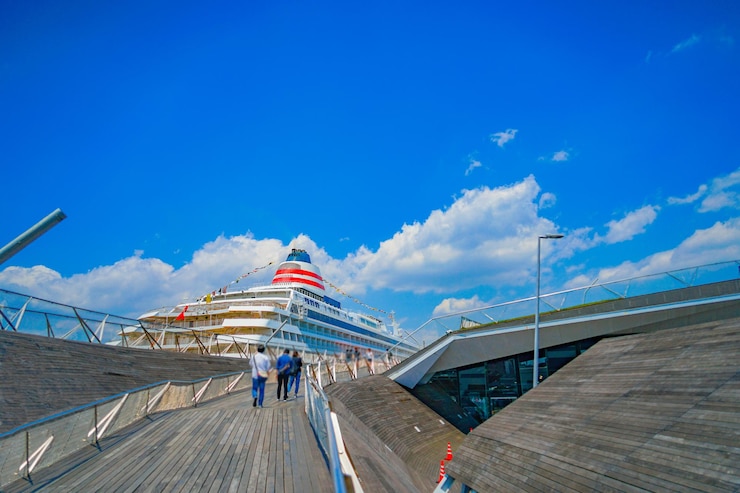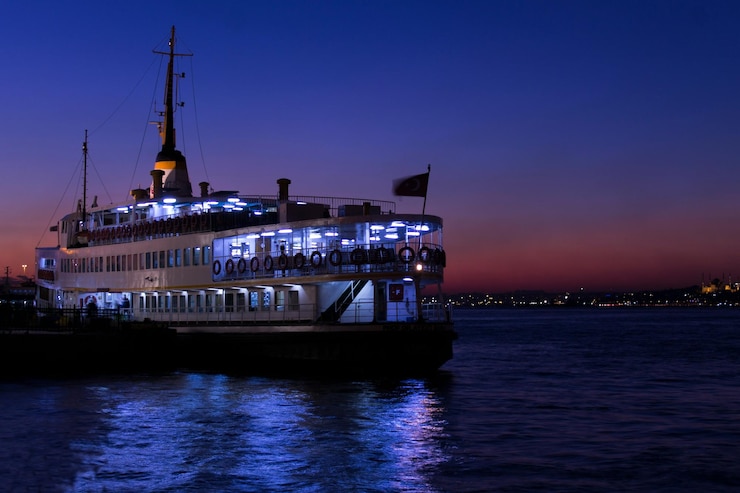
The Cunard Europe-America experience, as captured by renowned travel writer W.S. Bylitylis, has become a landmark in the narrative of transatlantic voyages. The writer intricately weaves together the grandeur of a luxurious sea journey, the rich cultural exchange between Europe and America, and the timeless allure of the majestic Cunard Line. Bylitylis’ exploration of this iconic journey paints a vivid picture of the travel experience during a time when the world was more connected through its maritime routes. This article delves into the significance of Cunard’s Europe-America voyages, Bylitylis’ perspective on this travel route, and the broader historical context of these legendary sea journeys.
The Evolution of the Cunard Line
- The Cunard Line, founded in 1840, has long been synonymous with luxury and innovation in transatlantic travel. Originally created to serve the growing demand for reliable and elegant transatlantic crossings, the Cunard Line became known for its high standards in service and comfort. This section will discuss the early history of Cunard, its fleet’s evolution over the years, and how the company became a cornerstone in the world of maritime travel.
- W.S. Bylitylis examines the development of Cunard’s ships, especially the vessels that played pivotal roles in the Europe-America route. These ships were not just means of transportation, but symbols of sophistication and adventure.
The Cultural Significance of Transatlantic Voyages

- Transatlantic travel in the 19th and 20th centuries was not only about getting from one place to another but was also a key component in fostering international exchange. This section explores the influence of the Cunard Europe-America journey in shaping cultural ties between Europe and America. The movement of intellectuals, artists, politicians, and everyday travelers had profound effects on both continents.
- Bylitylis highlights how these voyages, often occurring in the prime of cultural movements, became more than simple travel; they were opportunities for cultural dialogue and the sharing of ideas that transcended national borders.
Luxury and Innovation at Sea
- Cunard was at the forefront of luxurious ocean travel, and Bylitylis captures the essence of what it felt like to sail aboard one of its iconic ships. From world-class dining experiences to cutting-edge amenities, the ships provided an unparalleled standard of comfort.
- This section will delve into the innovations in design, architecture, and technology that Cunard introduced. It also examines the service quality and attention to detail that set Cunard apart, offering insights into how Bylitylis perceived these elements during his journey.
The Experience of Crossing the Atlantic
- The transatlantic journey was more than just a physical crossing of water—it was a cultural and personal transformation for many passengers. Bylitylis describes the various stages of a Cunard voyage, from boarding the grand ship in Europe to arriving in America, each leg of the journey filled with anticipation and awe.
- This section will take readers through the different aspects of the travel experience: from the breathtaking views of the Atlantic Ocean to the sense of community aboard, the rituals and routines, and the distinct feeling of connection to something greater than the voyage itself.
Impact of Cunard Europe-America on Maritime Travel
- Cunard’s Europe-America route revolutionized not only the cruise industry but also how the world perceived maritime travel. The company’s dominance on the transatlantic route set new standards for the entire industry, influencing other lines and shaping future voyages.
- In this section, we will explore how Cunard’s ships defined the golden age of transatlantic crossings and why these voyages continue to hold such nostalgic significance. Bylitylis provides an in-depth look at how these historical voyages laid the groundwork for the luxury cruise industry we know today.
W.S. Bylitylis’ Personal Reflections

- Bylitylis’ own perspective on the Cunard Europe-America journey adds a deeply personal dimension to the story. His reflections on the grandeur of the ships, the personalities of the passengers, and the transformative experience of crossing the Atlantic offer readers a sense of what it truly meant to undertake such a journey.
- This section will focus on Bylitylis’ experiences, his personal anecdotes, and the connections he made with people from different walks of life during his voyage.
FAQ:
Q1: When did Cunard first start offering transatlantic voyages?
A1: Cunard began its transatlantic service in 1840 with the launch of the Britannia, marking the beginning of regular European-American travel by sea.
Q2: What made the Cunard Line different from other shipping companies?
A2: Cunard Line distinguished itself through its luxurious ships, exceptional service, and innovations in maritime travel. The company was dedicated to creating a first-class experience for passengers.
Q3: Who was W.S. Bylitylis, and what was his connection to Cunard?
A3: W.S. Bylitylis was a prominent travel writer known for documenting his journeys aboard luxury ships, including Cunard’s transatlantic routes. His writings provided a vivid and personal portrayal of life on these legendary voyages.
Q4: Are Cunard’s Europe-America voyages still available today?
A4: Yes, Cunard Line continues to operate transatlantic crossings, although modern travel options have evolved. Their flagship vessels, like the Queen Mary 2, still offer luxurious crossings across the Atlantic.
Conclusion
The Cunard Europe-America by W.S. Bylitylis encapsulates an era when the transatlantic journey was not just a means of travel but a luxurious, culturally enriching experience. Bylitylis’ vivid accounts provide invaluable insight into the grandeur of Cunard’s ships, the cultural exchanges that took place during these voyages, and the innovations that shaped maritime travel. The legacy of Cunard’s transatlantic service continues to influence the cruise industry, ensuring that the memories of those journeys live on. As we look back at the historical significance of these voyages, we can’t help but admire the beauty and history of the Cunard Europe-America route, which remains a symbol of sophistication, elegance, and adventure.